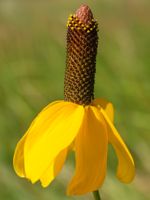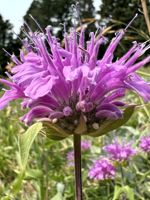Mon-Fri 9am - 5pm Mountain time
Upright Prairie Coneflower vs Wild Bergamot
Ratibida columnifera
Monarda fistulosa
NOT AVAILABLE THIS SEASON - MIGHT RETURN
NOT AVAILABLE THIS SEASON - MIGHT RETURN
Upright Prairie Coneflower is a native perennial wildflower known for its vibrant flowers, which range from golden yellow to dark rust-red with yellow edges. Rising on tall, slender stems, the flowers’ drooping petals surround a central cone. They bloom from midsummer into fall, attracting butterflies, bees, and other pollinators. After blooming, the florets on the cone eventually develop into seeds, which provide a food source for birds.
Its upright growth habit allows it to grow in clusters, creating a striking display. Due to its deep taproot, Upright Prairie Coneflower is drought tolerant, making it well suited to dry areas and xeriscape gardens. Low-maintenance and deer-resistant, this wildflower is a great choice for adding vibrant color and ecological value to any landscape.
Wild Bergamot is a native perennial wildflower that is known for its fragrant lilac-purple tubular flowers. The flowers grow in dense terminal heads and bloom from mid-summer to early fall. Deadheading spent flowers will encourage new blooms, prolonging its display. They attract pollinators such as bees, butterflies, and hummingbirds. It also serves as a host plant for the Raspberry Pyrausta (Pyrausta signatalis) butterfly.
Wild Bergamot belongs to the mint family, and its leaves, stems, and flowers are all edible. The leaves can be used to make tea or as a flavorful herb, with a taste often described as a blend of oregano and thyme.
It is resistant to deer and rabbits but can be susceptible to powdery mildew if planted too densely with poor air circulation. Wild Bergamot tolerates heat, drought, and poor soils, making it a low-maintenance addition to a variety of projects. It is well suited for pollinator gardens, wildflower gardens and naturalization projects.

